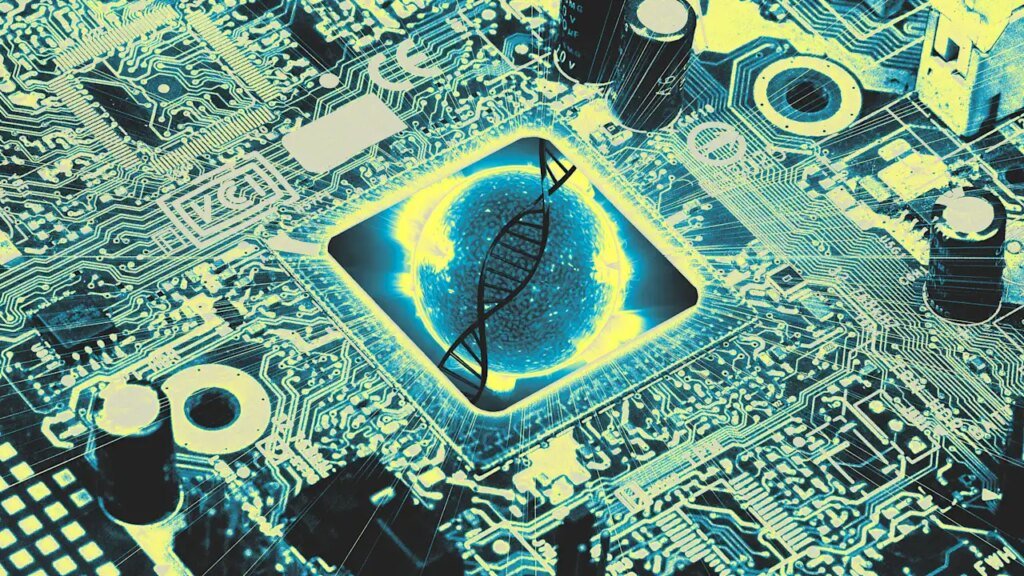The U.S. Department of Energy has struck a $1 billion deal with Advanced Micro Systems (AMD) to build two supercomputers that have unprecedented power to supercharge scientific advances ranging from nuclear power to developing cancer treatments.
The partnership, first reported by Reuters on Monday, will ensure the U.S. government has the necessary computing power to accommodate enormous amounts of data—and could deliver about three times the AI capacity of current supercomputers. The artificial intelligence-powered supercomputers could be deployed for advancing nuclear power and replicating fusion—the process that fuels the sun and creates massive amounts of energy.
The forthcoming AI supercomputers at Oak Ridge National Laboratory (ORNL) will be part of a new public-private partnership model. to help expand the U.S.’s leadership in scientific computing, strengthen national security, and drive the next generation of science and innovation.
“Winning the AI race requires new and creative partnerships that will bring together the brightest minds and industries American technology and science has to offer,” said U.S. Secretary of Energy Chris Wright said in a statement.
Shares of AMD rose nearly 1% in midday trading on Monday. The semiconductor maker’s stock has more than doubled in value this year, and the company recently forged a partnership to supply its chips to OpenAI to build out AI infrastructure.
SUPERCOMPUTER TIMELINES
The forthcoming supercomputers could be used to further advancements in technologies for defense and national security, including helping the U.S. government to manage its arsenal of nuclear weapons, along with accelerating drug discovery for the treatment of cancers, Wright told Reuters. “My hope is, in the next five or eight years, we will turn most cancers, many of which today are ultimate death sentences, into manageable conditions.”
The first of the two supercomputers to be deployed will be the Lux AI cluster, based on AMD’s MI355X artificial intelligence chips and the company’s central processing units (CPUs) and networking chips. The supercomputer system is co-developed by AMD, Hewlett Packard Enterprise, Oracle Cloud Infrastructure, and ORNL This supercomputer will mark the “first dedicated U.S. AI factory for science,” AMD said in a statement.
Once up and running in early 2026, Lux will help the U.S. to expand the Department of Energy’s near-term AI capacity and accelerate work on critical national priorities that include fusion, fission, materials discovery, quantum, advanced manufacturing, and grid modernization, according to the government.
The timeline for Lux will mark the fastest deployment of this size of supercomputer that AMD’s CEO, Lisa Su, has ever seen, she told Reuters. “This is the speed and agility that we wanted to [do] this for the U.S. AI efforts.”
A second, even more advanced supercomputer, called Discovery, will have a longer timeline for completion and is expected to be ready for operations sometime in 2028. Discovery will be an HPE system that’s powered by AMD processors and accelerates and its performance will far exceed Frontier, currently the world’s second-largest supercomputer that’s also located at ORNL, the Department said in a statement.
Thanks to this enhanced performance, scientists will be able to generate, process, and analyze data at record speeds, which could shrink discovery cycles from years to weeks, the Department said. In turn, this could power new advances in medicine, energy, cybersecurity, and advanced manufacturing.
“With Discovery and Lux, we are delivering leadership compute systems that combine performance and energy efficiency to advance America’s research priorities and strengthen U.S. leadership in AI, energy, and national security,” Su said in a statement.
This article has been updated to include more information on the project as well comments from the Department of Energy and AMD

